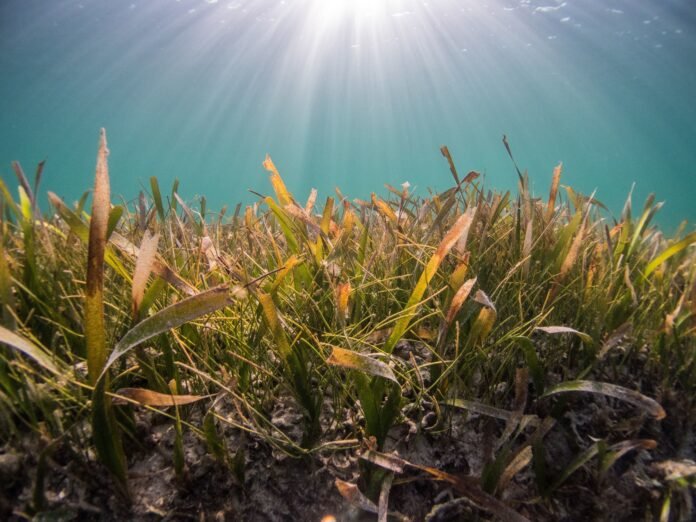In a groundbreaking initiative, a new exhibition in Goa has shifted the spotlight onto the often-overlooked concept of blue carbon, shedding light on its critical role in the climate crisis. The exhibition, a collaborative effort by environmentalists, scientists, and local authorities, aims to raise awareness about the significance of blue carbon ecosystems and their potential impact on mitigating climate change.
Blue carbon refers to the carbon stored in coastal and marine ecosystems such as mangroves, seagrasses, and salt marshes. These ecosystems act as carbon sinks, absorbing and storing large amounts of carbon dioxide from the atmosphere. The Goa exhibition delves into the importance of preserving these ecosystems, which have been relatively understudied compared to their terrestrial counterparts.
The event opened with a series of interactive displays that vividly portrayed the delicate balance of blue carbon ecosystems and their critical role in climate regulation. Visitors were guided through informative panels, illustrating how mangroves, with their intricate root systems, sequester carbon and provide crucial habitats for marine life.
One of the highlights of the exhibition was a virtual reality experience that allowed attendees to immerse themselves in the unique world of seagrasses. This interactive exhibit showcased the often unseen but vital role that seagrasses play in sequestering carbon and supporting biodiversity, offering a fresh perspective on the interconnectedness of marine ecosystems.
Experts and Environmentalists Research
Experts and environmentalists present at the event emphasized the urgent need to address the threats faced by blue carbon ecosystems, including coastal development, pollution, and climate change itself. The exhibition served as a platform for discussions on sustainable practices and policies that can help protect and restore these valuable ecosystems.

Goa, known for its stunning coastal landscapes, provided the perfect backdrop for this exploration of blue carbon. The exhibition highlighted the state’s unique responsibility and opportunity to lead in the conservation and restoration of these ecosystems. Local communities, traditionally linked to coastal livelihoods, were encouraged to actively participate in preserving the blue carbon-rich environments that are integral to their way of life.
The climate crisis, often associated with rising temperatures and extreme weather events, extends its impact beneath the ocean’s surface. Blue carbon ecosystems, often referred to as nature-based solutions, offer a promising avenue for combating climate change. Recognizing this, the exhibition in Goa aimed to bridge the gap in understanding and appreciation for the role that coastal and marine environments play in the global carbon cycle.
Beyond the educational aspect, the exhibition also featured artwork and installations by local artists, providing a creative dimension to the narrative. The fusion of science and art served to engage a broader audience, fostering a sense of collective responsibility for the conservation of blue carbon ecosystems.

Government officials attending the exhibition expressed commitment to incorporating blue carbon considerations into environmental policies. The event served as a catalyst for discussions on how the preservation of these ecosystems aligns with broader climate goals and sustainable development initiatives.
As the curtain falls on the exhibition, its impact lingers, challenging preconceived notions about the climate crisis. By highlighting the importance of blue carbon ecosystems, the event in Goa has successfully woven a narrative that extends beyond the terrestrial realm, urging individuals, communities, and policymakers to take action to safeguard these vital contributors in the fight against climate change. The exhibition’s legacy lies not only in the knowledge it imparts but also in the call to action it issues—a call to recognize and protect the blue carbon treasures that hold the key to a more resilient and sustainable future.
The Goa exhibition served as a catalyst for ongoing research initiatives focused on blue carbon ecosystems. Scientists and researchers, inspired by the discussions and insights gained during the event, expressed a renewed commitment to understanding the intricacies of these ecosystems. The need for more comprehensive studies and data collection became evident, with experts emphasizing the importance of bridging knowledge gaps to inform effective conservation strategies.
More About The Blue Carbon
Beyond its ecological significance, blue carbon also has considerable economic value. The exhibition explored the economic benefits of preserving these ecosystems, such as sustainable fisheries, ecotourism, and shoreline protection. The potential for blue carbon projects to generate income for local communities underscored the importance of viewing conservation efforts as not just environmental necessities but also as drivers of economic resilience.
The Goa exhibition’s impact extended to educational institutions, with schools and colleges integrating blue carbon awareness into their curricula. Environmental education programs were designed to instill a sense of environmental stewardship in the younger generation, ensuring that the knowledge gained from the exhibition would continue to shape attitudes and actions for years to come.
International collaboration emerged as a key theme during the exhibition, with experts from different corners of the globe sharing their experiences and best practices in blue carbon conservation. The event became a melting pot of ideas, fostering a sense of solidarity in the global effort to address climate change through the preservation of blue carbon ecosystems.
As the exhibition catalyzed local and global conversations, it also inspired similar initiatives in other coastal regions. The ripple effect of the event reached communities facing similar challenges, creating a network of awareness and action that transcends geographic boundaries. The success of the exhibition lies not just in its immediate impact but in the potential it has unlocked for a broader, interconnected movement towards safeguarding our oceans and coastal environments.
Moreover, the Goa exhibition on blue carbon has left an indelible mark on the trajectory of environmental awareness and action. By bringing together diverse stakeholders, from local communities to international experts, the event has illuminated the path forward in the collective effort to address the climate crisis. As the echoes of the exhibition resonate, they serve as a powerful reminder that the solutions to global challenges often lie in the hidden aspects of our planet, waiting to be uncovered and embraced for a more sustainable future.

